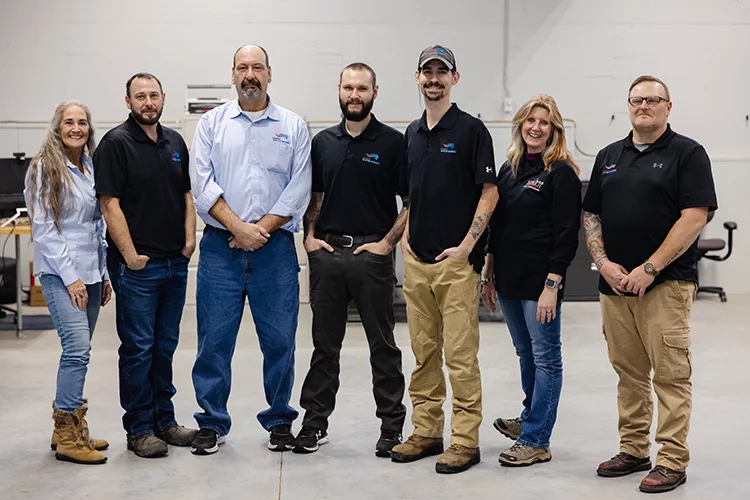There’s almost no limit to the type and variety of mechanical firms that install and service the heating systems across this great nation: family-owned, local, statewide, nationwide, union, nonunion, commercial-only, residential-only, industrial, full-service or tightly focused.
What really separates them, however, is their reputation, stability and profitability. The greatest disparity between them is not their size or corporate structure, but rather the level of success they achieve and maintain long-term.
Many companies are doing very well and seem to be providing a good living for everyone involved. However, other businesses are faltering. And while a scant few will never come right out and say it, some are outright failing.
So, what makes one contractor thrive and the next flop? Below are six common traits of flourishing companies. Most items listed below apply to any business, not just mechanical contractors. None of them are hard and fast rules for success, but rather characteristics that many of the most successful companies tend to have.
1. Be open to trying new things: Serial entrepreneur and business coach Gary Vaynerchuk takes every opportunity to drive home the following point: innovate or die.
Being open to trying new things is a trait that can be applied to almost anything, from new equipment to design software. There’s nothing wrong with sticking to tried-and-true best practices, but as markets, technologies, demographics, homes, legislation and marketing methods evolve, businesses must take the same risk of being left behind.
Explore something new each month. That doesn’t mean investing money into something foreign, but educating yourself. Read trade magazines to stay on top of current trends. Take it to heart when a customer mentions something you’ve paid little mind to in the past. Don’t ignore what your competition is doing — and what your youngest employees are saying.
2. Attend training, trade shows and manufacturer events: The need for constant and ample training can’t be denied. Most of today’s new equipment requires proprietary training, whether we’re talking about boilers, heat pumps or control platforms. This is a trend that will only accelerate. Take training seriously, and if you have employees who want more education, roll out the red carpet for them.
Closely tied to trying new things, there’s no better place than a trade show to see new technology and learn about it from the folks who know it best. Go to shows and find things that’ll improve your business. Talk with other professionals. Network.
Despite being a time commitment, visiting manufacturers isn’t only fun, it’s one of the best ways to learn the details of the equipment you install. This allows you to put a face behind the product, too. What better way to make connections with the folks you may have to call for tech support than face-to-face interaction?
3. Have a specialty: Companies with a specialty, even if their service offering is very broad, tend to be profitable. Their reputation within a niche allows them to charge a premium for their work. Either way, specialties or niches are profitable.
Consider what your company is good at, then get great at it. And if you’re already at that level but aren’t marketing accordingly, you may want to start beating your own drum a bit louder.
4. Maintain age diversity: Having a shop full of green techs is a little worse than a shop full of guys nearing retirement, and even less likely, based on the number of young people entering the trade.
Seasoned techs are extremely valuable, but if they make up your entire payroll, your prospects of surviving the next decade are slim. Having young, strong backs and eager minds can make life easier for the whole crew. Also, younger employees — if you listen to them — can offer fresh ideas and perspectives. If your company has a dedicated marketing person, a young perspective might be exactly what you need in that seat.
To maintain age diversity, you’ll also need to…
5. Learn to recruit and retain: Recruiting and retaining employees are two different things, but much of what attracts prospective employees will help keep them.
Successful retention comes in part through workplace culture, something that isn’t always immediately apparent to prospective employees. Make your company a great place to work, and make sure it shows.
Keep in mind that as employees progress through various stages of life, their priorities will change, too. Maybe the opportunity for advancement and better pay is extremely attractive to a young person, while outstanding family healthcare, retirement planning and less physical strain might be bigger incentives for middle-aged employees and those soon to retire.
Recruitment may be best accomplished with out-of-the-box thinking. Attend seminars, speak with business coaches and trade school instructors, read up on it, talk to young people and listen to what they’re saying. Learn what your competition is doing, if anything, and make your approach better.
6. Passion: Last but not least, a healthy passion for the work is evident among contractors who’re dominating their market. This is a bit of a “chicken or the egg” dilemma. That is, if a company is really strong, the owners and managers are more likely to be fired up about their job. However, success appears more often when there’s a desire to flourish. If your flame is dim, find some No. 2 fuel oil!






